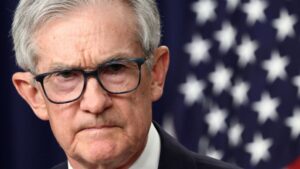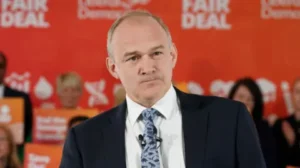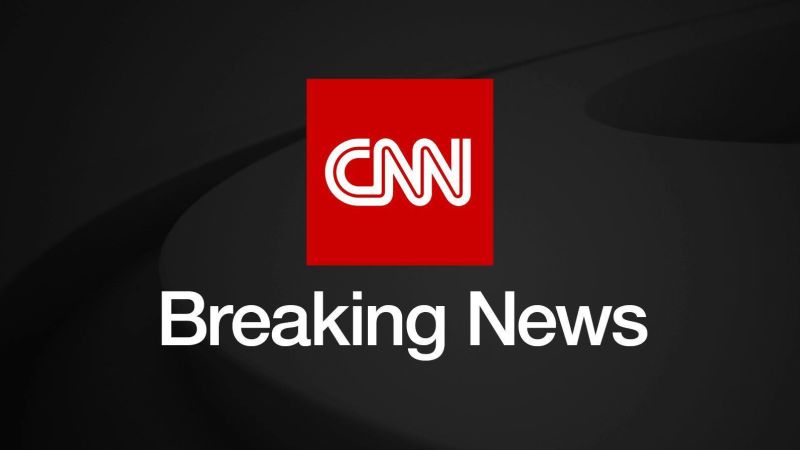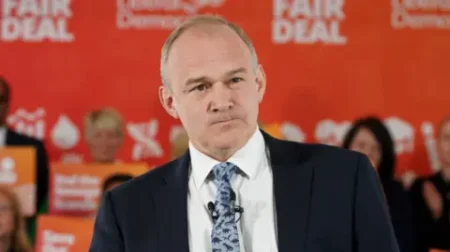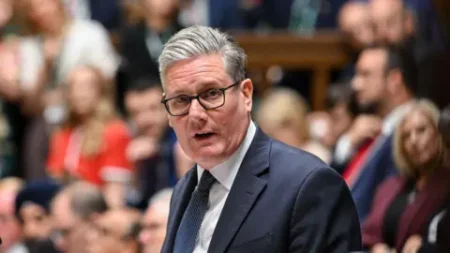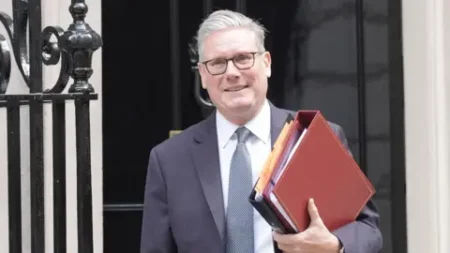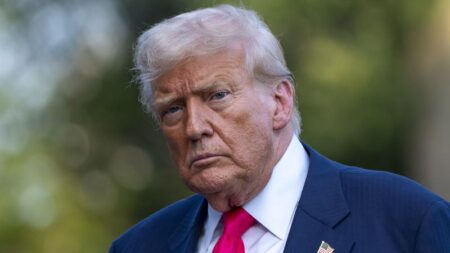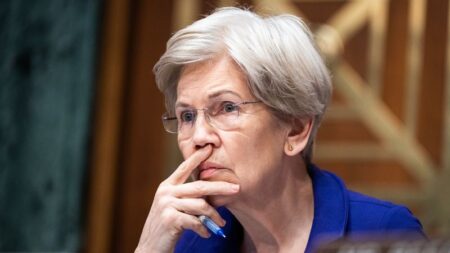In a recent series of statements, President Donald Trump expressed mixed feelings regarding the potential firing of Federal Reserve Chair Jerome Powell, creating a maelstrom of uncertainty surrounding the leadership at the United States central banking system. On Wednesday, Trump remarked to reporters in the Oval Office that while it was “highly unlikely” he would terminate Powell’s position, he also admitted that he never entirely rules out any possibilities, indicating a sense of unpredictability in his decision-making process.
This statement followed an intense private meeting with lawmakers, where Trump demonstrated his frustration with Powell, suggesting that he would like to see him removed from his post. Behind the scenes, the president has shown a keen interest in finding a way to oust Powell, who has drawn Trump’s ire primarily due to his reluctance to lower interest rates quickly enough to align with the administration’s economic objectives. The president’s frustration is compounded by Powell’s decisions, which Trump views as not beneficial for the economic landscape he wishes to cultivate.
During the aforementioned meeting, Trump reportedly engaged lawmakers in a discussion about the possibility of firing the Federal Reserve Chair. According to a senior White House official, the president had been quite vocal, even hinting that he may follow through with this action as soon as the next day. He expressed discontent specifically regarding a $2.5 billion renovation proposal for the Federal Reserve building, which Trump felt was unreasonable, contributing to his grievances against Powell.
Intriguingly, reports suggest that Trump even brandished what he claimed was a letter intended to fire Powell during this intimate gathering, adding a tangible element to his intentions. A witness in the room noted that the president appeared motivated to follow through on this course of action, buoyed by the reactions from lawmakers who encouraged his willingness to proceed with Powell’s dismissal.
Despite the internal pressures and signals he sent during the meeting, Trump altered his narrative somewhat in public when he faced reporters the following day. He confirmed that he had broached the subject of Powell’s termination with the lawmakers he consulted, who seemed largely in favor of the idea. However, the president disputed the notion that he had made any definitive plans to fire Powell, calling such claims “not true.” This contradiction further emphasizes the inherent complexity of Trump’s decision-making style, which is often characterized by dramatic swings between firmness and hesitation.
On Tuesday evening, prior to his Oval Office remarks, Trump escalated his criticism of Powell by insinuating that the proposed renovation could serve as sufficient grounds for dismissal. Nevertheless, multiple sources clarified that there was no immediate action on the horizon regarding Powell’s job security. Historically, Trump has issued threats of termination concerning various figures, including Powell, without following through, leading many observers to contend that he may simply be playing with the idea for the time being. One White House official remarked that Trump seems to be “toying with the idea right now,” signaling that while the discourse surrounding Powell’s potential firing is heated, it may not result in any concrete actions in the immediate future.
Overall, the situation surrounding Powell has evolved into an intricate tale of political maneuvering, potential clashes between executive authority and established financial institutions, and Trump’s sometimes erratic approach to governance. As tensions heighten and the administration navigates the complexities of Federal Reserve policy, this narrative is bound to develop further, leaving the financial community and the public to watch closely for any unexpected shifts in the central bank’s leadership.
The intricacies of this ongoing story highlight the broader implications that leadership changes at the Federal Reserve can have on both domestic and global economic stability. As this narrative unfolds, updates will continue to clarify the situation and provide insight into the administration’s true intentions regarding the future of Jerome Powell at the helm of the Federal Reserve.


